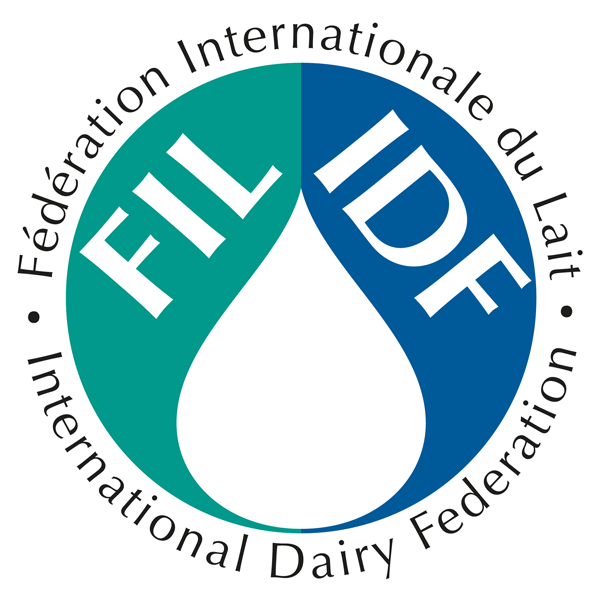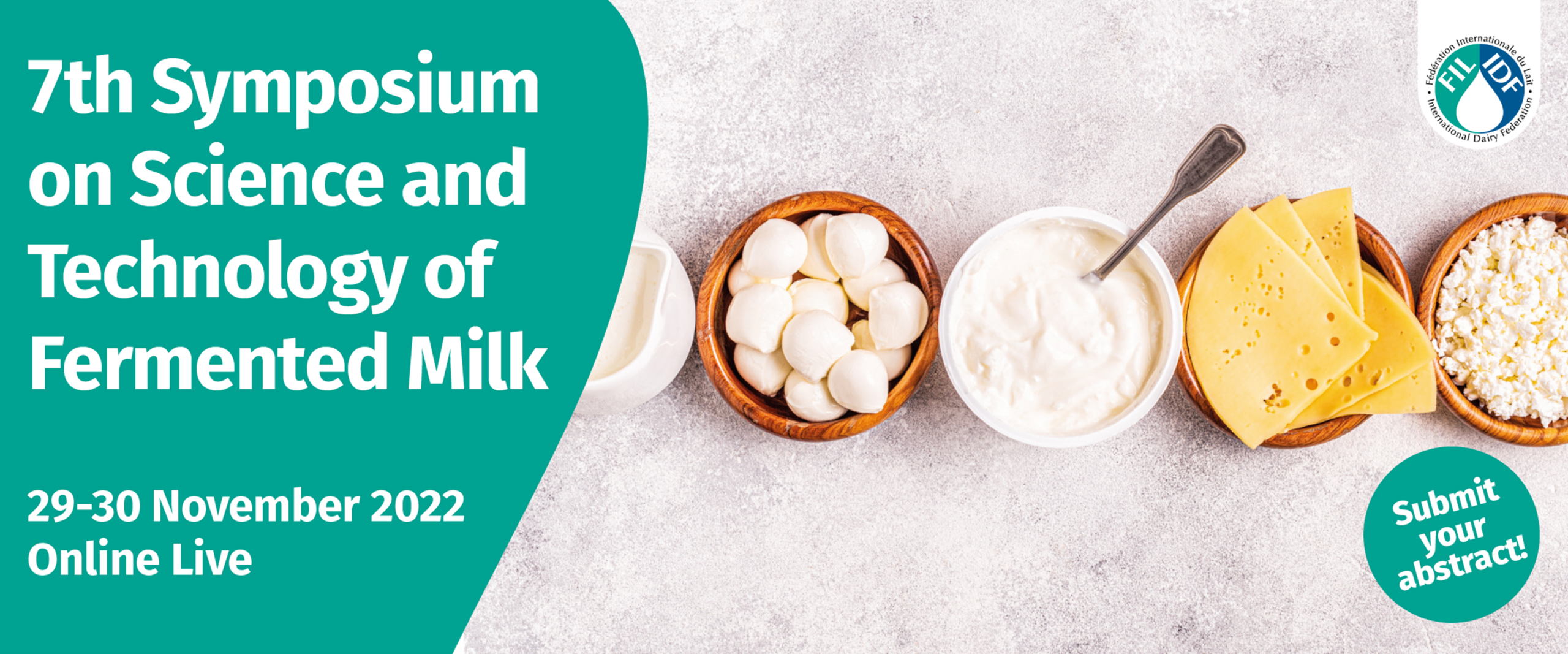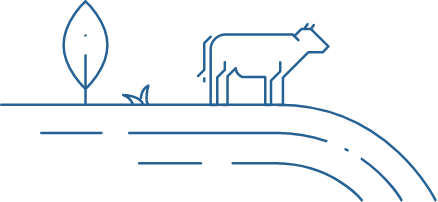Fermentation of milks is one of the oldest methods used to prolong the shelf life of milk and has been practised by humans for thousands of years. Fermented dairy products and probiotic bacteria have proven to be of growing interest to consumers, as they provide health benefits due to their effect on the gut microbiota. In addition, fermented dairy products, due to their special characteristics, are an excellent matrix for the incorporation of ingredients and/or nutrients that confer the final product properties beyond the purely nutritional ones, making them true functional foods, interesting in a healthy diet.
This two day- virtual event symposium aims to present the latest research and product innovation in the area of fermented milk. It is intended to attract academia and research, companies, and regulators.
Draft Programme
Session 1: New developments and opportunities in fermented dairy
Mr Georgios Paraskevakos, International Probiotics Association
Probiotics and the Microbiome; a synopsis of trends, regulations, and the market from the IPA desk
Ms Rosanna Pecere, International Probiotics Association Europe
Probiotic market overview, consumer perception and regulatory limitations in the EU
Mr Ronni Rohde, Chr. Hansen, Denmark
Sensory evaluation for fresh dairy product innovation
Dr Photis Papademas, Cyprus University of Technology, Cyprus
Non-bovine milk developments and opportunities for fermented dairy
Dr Audrey Gilbert , Universitè Laval, Canada
Evaluation of microscopic image analyses and low-frequency time-domain NMR as potential new tools to predict and assess stirred commercial yogurts qualities
Session 2: Innovation in fermented dairy for human health
Professor Dennis Savaiano, Purdue University, United States
Yogurt and Health: What do we know and what else do we need to know?
Dr Christophe Chassard, INRAE, France
Fermented milks and human health
Dr Olaf Larsen, Yakult, The Netherlands
Probiotics: matrix effects & efficacy
Dr Benjamin Bourrie , University of Alberta, Canada
A novel kefir product utilizing traditional microbes improves metabolic health better than commercial kefir in mice and humans
Dr Chris Cifelli, National Dairy Council, United States
Health effects of fermented dairy
Dr Subrota Hati, Kamdhenu University, India
Health Benefits of milk bioactive peptides from different species of fermented milks
Dr Guy Vergères, Agroscope, Switzerland
Functional properties of fermented dairy products: from the genome of lactic acid bacteria to human epidemiological studies
Dr Farhad Garavand, Teagasc, Ireland
Boosting milk postbiotics and bioactives by supplementation and fermentation: tracking antihypertension activity, antioxidant potential, free amino acid profile, and gastrointestinal digestion effects
Session 3: Microstructure of dairy products
Dr Doris Jaros, Technische Universitaet Dresden, Germany
Exopolysaccharid-producing starters and microstructure of fermented milk
Dr Li Day, AgResearch, New Zealand
Differences in microstructure, rheological properties and aroma metabolite profiles of fermented milk using different cultures
Dr Georg Surber, Technische Universitaet Dresden, Germany
Case study on structure–function relationships of exopolysaccharides from Streptococcus thermophilus in stirred skim milk gels
Dr Anita Pax, Teagasc, Ireland
Advanced microspectroscopy techniques to study the effect of different hydrocolloids on the microstructure and physical properties of fermented dairy products
Professor John Lucey, University of Wisconsin-Madison, United States
Manipulating milk protein interactions to control yogurt texture
Professor Meral Kılıç Akyılmaz, Istanbul Technical University, Turkey
Structure and stability of fermented milk drinks
Davor Daniloski, Victoria University, Australia, and Teagasc, Ireland
The function of β-casein phenotype on the rheological characteristics and structural properties of acid-induced milk gels
Agathe Schera , STELA Dairy Research Center, Canada
Impact of adjunt strain in co-culture with a low texturizing starter on rheological and physical properties of stirred yoghurt
Session 4: Exploration of novel ingredients and processes for fermented dairy
Professor Siv Skeie, The Norwegian University of Life Sciences, Norway
Production of fortified yogurt; Enrichment of the protein or phospholipid content
Dr Olivia McAuliffe, Teagasc, Ireland
New strain discovery for applications in fermented milk products
Dr Mutamed Ayyash, United Arab Emirates University, United Arab Emirates
Fermented camel milk: bioactive properties and textural challenges
Dr Rashmi Mallapa, ICAR-National Dairy Research Institute, India
Integrated omics (Metagenomics and Culturomics) approach to reveal the microbial signatures of Dahi
Professor Gisèle LaPointe, University of Guelph, Canada
A fresh look at an enduring problem: starter functionality in fermented dairy products
Dr Anil Kommineni, Danone North America, United States
Novel ingredients and processes for high protein – Low sugar fermented product innovations
Dr Nico Piskors,University of Hohenheim, Germany
Tailoring the rheological properties of fat-free fermented concentrated milk products using high-power ultrasound to modify particle voluminosity
Dr Livia Darnay, University of Veterinary Medicine Budapest, Hungary
Characteristics of ripened camel cheese made from pasteurised or spray-dried milk with microbial transglutaminase
Scientific Committee
- Dr Diarmuid Sheehan – Chair of the IDF SC on Dairy Science and Technology
- Prof. Dr. Catherine Stanton – Teagasc, Ireland
- Dr. Toshiya Kobayashi – Japan
- Dr. Henrik Jørgen Andersen – Arla Foods, Denmark
- Dr. Carolina Maldonado Galdeano – Cerela, Argentina
- Dr. Marie-Claude Gentes – Agriculture and Agri-Food Canada
- Prof. Dr. Thom Huppertz – Wageningen University, The Netherlands
- Dr. Arjen Nauta – Friesland Campina, The Netherlands







